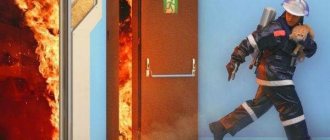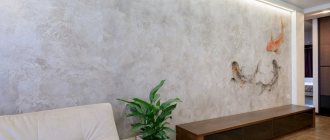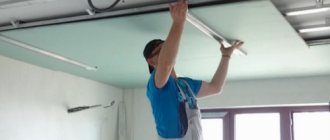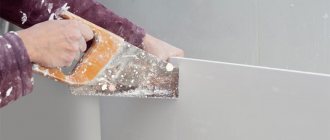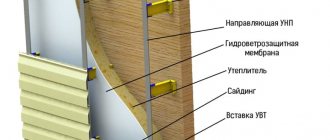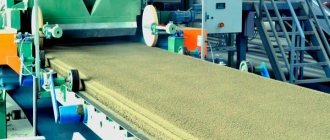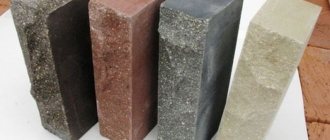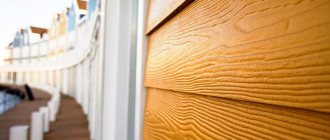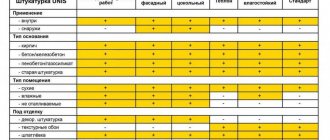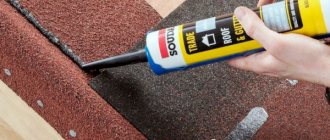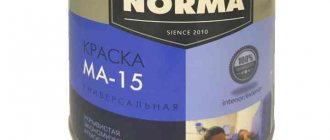Many residents of comfortable houses often need a special fire-resistant material, with which they can carry out major repairs or complete redevelopment. For these purposes, gypsum fiber sheet blanks (GVL) are best suited, characterized by such unique characteristics as lightness, flexibility, fire resistance and affordability.
Fire-resistant gypsum boards should not be confused with plasterboard. There are differences in production and structure between the materials. GVL is more durable and rigid, although it is inferior to plasterboard in flexibility.
Fire-resistant drywall - what is it, pros, cons, scope of application
Fire-resistant plasterboard is a sheet of laminated material - gypsum board, covered in a cardboard shell. In addition to gypsum, the inner part includes clay, water and fiberglass, and the outer part contains a special impregnation of fire retardants. On the outside, the material has a characteristic red color.
Unlike standard gypsum plasterboard, fire-resistant plasterboard burns quite slowly or does not support combustion at all, depending on the conditions of fire spread. The period of direct flame retention ranges from 20 to 60 minutes and is determined by the following factors:
- The most compacted connection between cardboard and gypsum filler.
- Anti-flammable impregnation.
- Reinforcing structure made of fiberglass threads up to 30 mm long, preventing destruction under the influence of heat.
- Contains fireclay clay. Under the influence of high temperature, it sinteres and, strengthening the slab, prevents it from crumbling.
- Presence of crystal hydrates in the composition. When heated, they release water. As a result, the material becomes damp and extinguishes itself.
Structure of fire-resistant drywall Source pozharanet.com
All this makes it possible, if not to contain the spread of fire, then at least to slow down its spread until professional fire-fighting assistance arrives.
Advantages and disadvantages
The main advantages of fireproof gypsum plasterboard:
- Environmental friendliness, cleanliness, safety. Can be used in any room.
- High resistance to fire spread - up to 60 minutes.
- Increased moisture resistance - can be installed in rooms with a high degree of air humidity.
- Good noise and heat insulation due to the clay component included in the composition.
- Service life is at least 5 years.
- Convenient processing and installation.
- Versatility in finishing - suitable for plastering, painting, whitewashing, wallpapering and tiling.
- Preservation of the room microclimate.
- Reasonable price.
However, despite its good fire resistance, heat-resistant drywall creates a number of difficulties in installation and use - it is necessary to use special tools for cutting, high density and weight, the need for strengthening under loads, in addition, GKLO is not as water-resistant as GKLV or GKLVO.
Covering a room made of aerated concrete blocks with fire-resistant plasterboard Source pozharanet.com
Scope of application
Heat-resistant gypsum board has a wide range of applications:
- Finishing of main walls and load-bearing structures.
- Covering wooden surfaces to prevent fire.
- Manufacturing of fireproof boxes for laying communications.
- Construction of interior partitions.
- Creation of suspended ceilings.
- Insulation of chimneys.
- Finishing of stoves and fireplaces.
Note! GKLO can be equally effectively used to create interior partitions to prevent the spread of fire in the event of a fire. It can be used equally effectively for finishing fire-hazardous premises - boiler rooms, boiler rooms, walls in a bathhouse opposite the firebox - to prevent heating of building structures from hot elements.
See also: https://m-strana.ru/services/otdelochnye-materialy/
General information
The abbreviation "GVL" stands for gypsum fiber sheet. This material is also popularly known as “Knauf-superlist”. I’ll say right away that saying “fire-resistant GVL” or “fire-resistant GVL” is not entirely correct.
The fact is that gypsum fiber sheet is inherently fire-resistant. Therefore, there are no modifications of it with increased fire resistance.
The main difference between a gypsum fiber sheet and the familiar plasterboard is its structure. If drywall is a layered material, then gypsum plasterboard is homogeneous.
GVL differs from gypsum plasterboard in its homogeneous structure
The basis of GVL is a gypsum mixture with cellulose fibers, which is fluffed before use. According to GOST R 51829-2001, the fibers are distributed evenly, and their content reaches 15-20 percent. As you might guess, cellulose provides reinforcement, thereby increasing its strength.
As a result of pressing, the material takes the form of a straight sheet. Geometric deviations do not exceed three millimeters.
The front side of the material is sanded and treated with a special compound that prevents chalking. Thus, GVL is a material used for rough finishing. Accordingly, it can be considered as an alternative to drywall.
Comparison of soundproofing qualities of GVL with other materials
Varieties
Modern manufacturers produce 4 main types of construction plasterboard:
- Standard. Gray in color, characterized as dry plaster for interior decoration with normal humidity.
- Moisture resistant. Green in color, it is resistant to dampness, fungi and mold.
Types of construction drywall Source stroy-podskazka.ru
- Fire resistant. Red in color, prevents fire.
- Moisture and fire resistant. Green in color, characterized by resistance to fire and humidity at the same time.
If ordinary gypsum board has a density of 800 kg/m³, then its fire-resistant analogue, due to the compacted fire-resistant gypsum included in the composition, is about 850 kg/m³. At the same time, increased strength and fire resistance is achieved by the presence of several impregnated layers.
Recommendation! One of the main disadvantages of drywall is its lack of strength with respect to external fasteners. Therefore, to mount heavy objects on the wall, it is necessary to use brackets with an increased contact area to maximize the distribution of the weight of the object being mounted over the surface.
Types of GVL
In addition to the standard gypsum fiber material, one of its modifications is known, which belongs to the category of moisture-resistant structures and is designated as GVLV.
According to the classification, it is used in facilities with high levels of humidity, which may include kitchens and bathrooms, laboratory and workshop premises, car washes, canteens, restaurants, cafes. In addition to the humidity indicator, fire-resistant gypsum plasterboard differs in the condition of the sheet edge, which has two different designs: straight and folded. The first of these modifications is used when finishing floors, and the second is most often used when arranging wall structures in frame construction.
Based on the dimensions of the sheet blanks produced, this fire-resistant material is divided into the following two types:
- classic modification with a sheet width of 1.2 and a length of 2.5 meters;
- mini-sheets one meter wide and one and a half meters long.
The thickness of each of the listed types of plates is 10 and 12 mm, respectively.
Characteristics
A standard fire-resistant plasterboard sheet has the following set of technical characteristics:
- Dimensions – 250x120x1.25cm.
- Weight – 30kg.
- The category of combustion ability is G1 (corresponds to fireproof).
- Flammability class – B1 (meets fire resistance).
- Toxicity degree – T1 (non-toxic).
- Density – 850 kg/m³.
Finishing a fireplace using gypsum plasterboard Source gipsokarton-blog.ru
- The ability to conduct heat is 0.22 W/m².
- Smoke generation – D1 (does not produce smoke when exposed to fire).
Important! When choosing gypsum plasterboard for home finishing, among the main technical characteristics that you should pay attention to are fire-fighting properties (maximum temperature), as well as how fire-resistant and harmless the plasterboard is in terms of toxicity. This information is contained in the quality and fire safety certificate.
Flammability test procedure
The quality of heat-resistant plasterboard is checked in accordance with GOST 32.614 , and strict testing conditions are applied in the production workshop.
Testing procedure:
- take 3 sheets of plasterboard from the test batch of goods;
- the flame of two gas burners is directed onto the sample;
- the fire test is carried out for 20 minutes, so that the temperature on the surface reaches +800°C;
- all samples are tested.
Valera
The voice of the construction guru
Ask a Question
If one of the sheets does not pass the test (loses its integrity, breaks into pieces), then the entire batch is rejected and not allowed for sale. Non-flammable GVL and GKLO are diagnosed when there is a change in production technology, the introduction of new additives, and also once a quarter. A certificate of conformity is issued for the tested batch.
Criterias of choice
When choosing a fire-resistant plasterboard sheet, in addition to the technical characteristics and its purpose, you need to pay attention to the manufacturer’s brand. Since only an official factory can guarantee the declared properties of its products. Among the most popular brands are:
- Knauf.
- Belgyps.
- GYPROC.
- GIFAS.
- NORGIPS.
- Volma.
- Giproc.
- Rigips.
- Magma.
The prices and quality of products from the presented manufacturers are approximately the same. Therefore, when purchasing, first of all, the material must be checked according to the following criteria:
- External integrity - absence of cracks, breaks, potholes, etc. defects.
Only high-quality drywall will provide an airtight coating Source levelten.ee
- Coincidence of markings and inscriptions on the packaging and sign of the product - brand name, dimensions, model, GOST are indicated on the edge of the slab.
- Compliance with storage conditions - drywall must be kept at an ambient temperature of at least +10°C.
On a note! Fire-resistant drywall is not only harmless to the health of the residents of the house, but also useful - both as a non-flammable material and as a humidity regulator in the room. It easily absorbs excess moisture from the atmosphere, and when the air becomes excessively dry, on the contrary, it releases it, thereby stabilizing the home microclimate.
Frame
Installation of gypsum fiber boards can be done in two main ways - frame and frameless. In the first case, a frame is pre-constructed onto which the slabs are subsequently fixed. In the second, the slabs are glued directly to the wall surface using special glue.
The best material for creating a frame for false walls is a metal profile.
Work is carried out in the following sequence:
- Marking the room - using special tools, marks are made on the surface along which the frame will be mounted in the future.
- Installation of the starting profile involves mounting a frame around the perimeter of the room. For this purpose, anchors with sleeves made of plastic or metal are used. They are screwed into pre-drilled holes with a depth of 40 mm. In areas where the profile adjoins the main structures, a sealant is applied.
- Installation of the post opening begins with the doorway, its edges are mounted from two-post elements built exactly into each other. All necessary parts must be fixed with wooden blocks. The jumper is made from a profile for racks, bent in a U-shape.
- Formation of vertical posts - they are inserted into the starting profile from above and below, the pitch is calculated so that the edges of the gypsum fiber board fall exactly on the center of the guide when sheathing. The main thing is that the gypsum fiber sheets are placed on both sides of the partition being formed with a slight offset of the joints.
When installing the frame, do not forget to think about communications; for this purpose, special holes are made in the racks for cables and electrical wires.
Covering a frame with panels is a rather labor-intensive job that requires effort and time:
- The gypsum plasterboard sheet is cut so that when joining the slabs there is a gap of at least 5 mm. If this rule is not followed, deformations may occur in the future.
- The trimmed sheet of gypsum fiber is applied to the frame and leveled. If its edge “sags,” an additional metal jumper is inserted into the structure.
- The plate is fixed using self-tapping screws; screws should be 4 cm long and tightened in increments of 30 cm.
The structure of gypsum fiber is porous, this often causes uneven application of paint or glue during further finishing of the gypsum fiber surface. That is why you should carefully putty the surfaces of the entire area of the slabs. To do this, you can use the most common gypsum putty. Only after this the wall becomes suitable for any type of finishing materials.
Briefly about the main thing
Fire-resistant plasterboard contains gypsum modified with clay and glass fibers at its core, and is covered on the outside with cardboard impregnated with fire retardants. Thanks to this structure, the material is able to hold back fire for 20 minutes to 1 hour without destruction. Its main advantages:
- Fire protection.
- Harmlessness.
- Moisture resistance.
- Sound and heat insulation.
- Durability.
- Versatility.
- Cheapness.
- Ability to maintain microclimate.
The disadvantages are expressed in the specifics of material processing and insufficient strength. GKLO is widely used for fireproofing, insulation, noise and thermal insulation. Among its varieties, fire-resistant and fire-moisture resistant stand out. When choosing, you need to pay attention to the technical characteristics, appearance, labeling and storage conditions before purchase. Installation of fire-resistant plasterboard boards is carried out using standard frame technology, but in compliance with recommendations regarding the specifics of the material.
Ratings 0
Application and installation features
They are used for cladding the walls of evacuation corridors, tunnels, in the form of passive insulation of building structures and structures from fire. For example, in a wooden house, cladding significantly increases the fire safety of the building. There are no restrictions on the use of fire-resistant plasterboard sheets , since the material is environmentally friendly.
Rules for installing heat-resistant panels:
- metal profiles are used as a frame;
- fasten the sheets with hardware with appropriate fire-resistant characteristics;
- when lining communication shafts and shafts, additional insulation is made from fire-resistant materials, for example, a foil layer or mineral wool;
- external corners are trimmed with metal corners, increasing the strength of the entire structure.
The panels are installed so that there is a gap of 1 - 2 mm , screws are placed in increments of 200 - 300 mm. Pay attention to sealing seams ; special compounds with modifiers are used for the work, which impart heat resistance to the putty. The brands used are “Osnovit Shovsilk PG 33 H” or “Volma-shov” .
